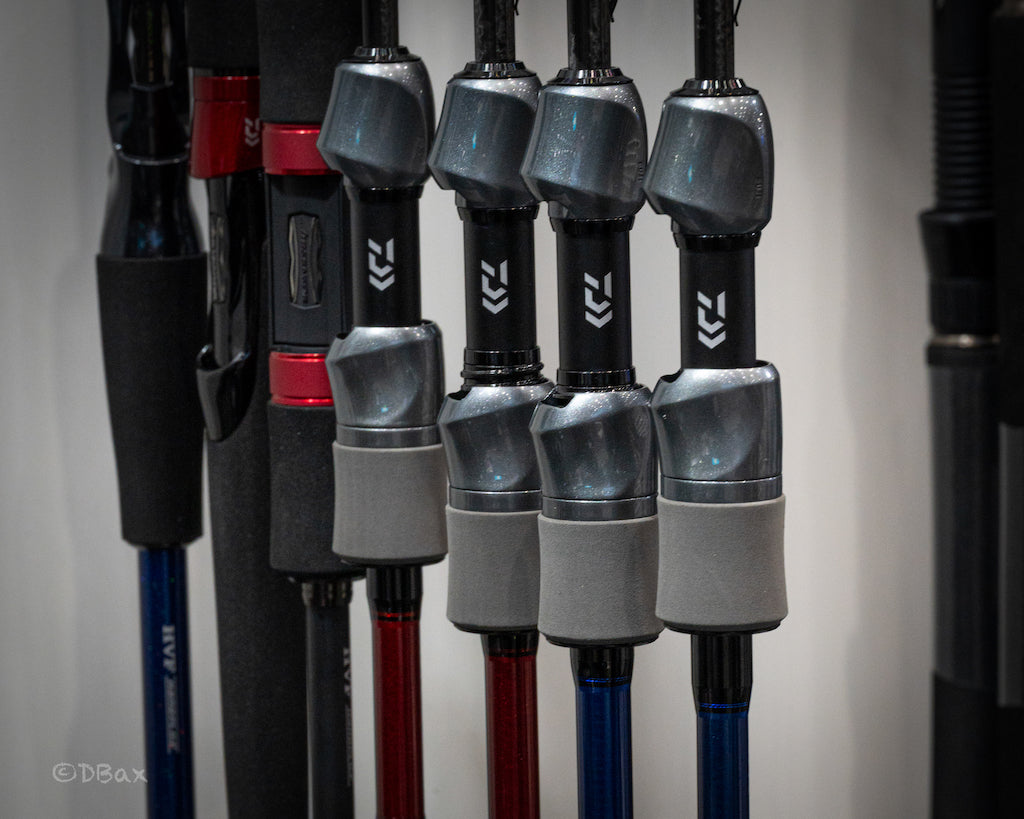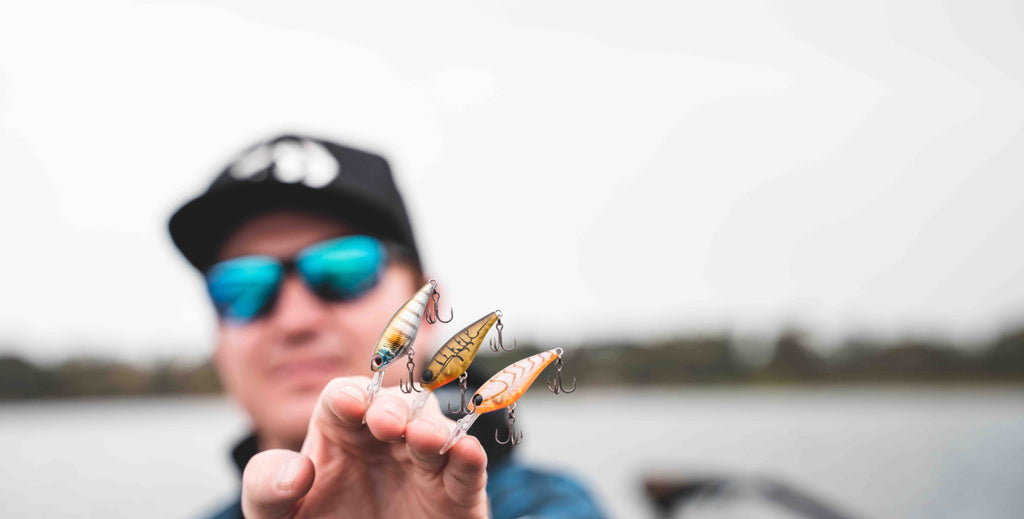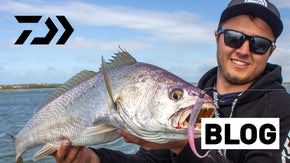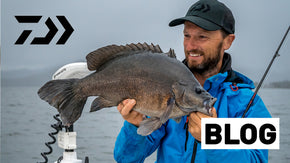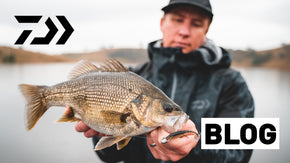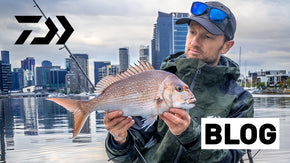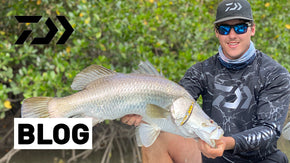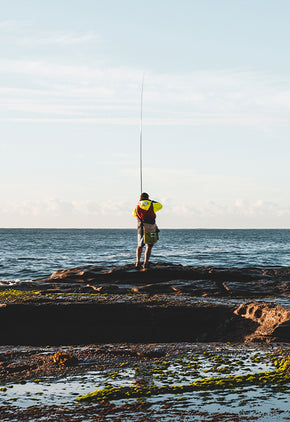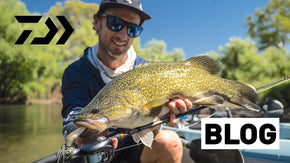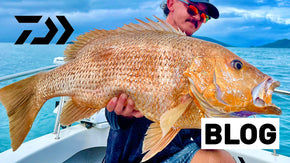Posted 15th December 2023
How to Catch Redfin: A Complete Guide


By Robert Thornton
Like many parts of the colonised world Australia is full of introduced species that were brought here by their European captors. Redfin perch, known simply as ‘perch’ in their native Europe, are just one of many colonial relics of this kind. Over time we’ve come to accept that these alien animals are here to stay, for better or for worse.
While I believe the ecological consequences far outweigh any benefits from such projects in most cases, there is value in introduced species, and any hunters or anglers understand this. Following their introduction redfin managed to proliferate on an unprecedented scale, however anglers were quick to recognise the sporting and eating qualities these continental imports offer. In doing anglers have managed to control their numbers in some areas.
In this blog we will look at the history of redfin perch in Australia, where to find them, the best tackle to use, and finally how to catch them!
Thinking of England
Like many introduced animals in Australia redfin were brought here by European settlers in the mid-nineteenth century. Native to northern Europe (including the UK), early settlers felt that this cold-water species would be right at home in Australia’s slow-flowing southern freshwater streams, and they were right.
The problem is that they settled into Australian life a little too well. Their introduction came at the expense of certain native species and there’s a few reasons for this. One of the main reasons is that reddies are an incredibly voracious feeder, happy to snaffle almost anything that fits in their relatively large mouth, in turn increasing competition for natives. Another is their ability to inhabit a wide range of environments and withstand the extreme Australian climate. Lastly is the fact that that our native fish don’t tend to like eating redfin eggs, and their hatch rates are abnormally high.
These days redfin inhabit cooler freshwater lakes, lagoons, swamps and slow-flowing streams in NSW, ACT, Victoria, South Australia, Tasmania and Western Australia, and are still turning up in places where they were not previously recorded.
A fish with credentials like this is inevitably going to be an angler’s dream, and Aussie fishers have grabbed this opportunity with both hands. Redfin offer great angling opportunities to both bait and lure fishers in a range of environments. Relatively forgiving of sloppy presentation, they serve as training wheels for novice and junior anglers at the beginning of their angling journey, however seasoned anglers can still test their cunning with the larger, wiser models in excess of 2kg. As a bonus, reddies taste great, often described by southerners as ‘freshwater whiting’!
Melbourne-based Jesse Rotin has spent many hours chasing these curious little battlers and even after so many years still recognises their value to anglers.
“While some people look the other way when you mention redfin, I like to use the fact that they’re introduced to my advantage,” he explains, “If I’m chasing bass or yellas but they’re not really chewing, I find the reddies will usually have a go and keep me busy.”
“They’re not the best fighting fish,” he continues, “but they taste great and usually you can put together good numbers.”
“They make up for a lot of things.”

Striking red
In learning how to catch redfin the biggest challenge is probably finding them. Don’t let this give you the wrong idea though – they are very widespread – and if you live in a region known to harbour redfin you shouldn’t have too much trouble finding a place to fish for them. It’s difficult to pin-point exactly where their Australian distribution starts and ends, as most of their expansion has happened independent of humans and is likely still ongoing. Regardless, if you live in Melbourne, Adelaide, Sydney, Perth or Canberra, chances are that have you redfin within easy riding or driving distance.
“Where I live they like warm, discoloured and slow waters,” Jesse explains, “Any slow [or still] pools are the ones that tend to hold the most redfin.”
“They tend to steer clear of fast waters like the ones we associate with trout.”
They also live behind many dams around the country; lakes Burley Griffin, Blowering and Eildon are a few examples. Additionally, they have also found their way into many natural lakes, lagoons and swamps such as lakes Purrumbete and Bullen Merri.
Redfin like environments with some form of cover such as aquatic weed, dead trees or rocks, but will also sit in open water at times, especially in larger bodies of water.
Redfin prep
Redfin don’t demand the use of specialised gear, and most anglers around the country will already possess tackle that is suitable for these fish. Like many Aussie redfin chasers, Jesse doesn’t see any need to fork out for fancy gear.
“A standard spinning outfit in the 2-4kg range will handle the biggest reddy,” he says, “you can’t go wrong.”
Daiwa’s 2500/702LFS Aird XT Pre-Mounted Combo is an inexpensive spinning rod and reel pairing perfectly suited to a bit of redfin lure flicking, as well as other applications as well.
Spooling this combo up with light braided line is a good idea if you’re exclusively using lures, with J-Braid Expedition in 8lb the perfect ultra-thin braid for spinning around heavily vegetated waterways. Light fluorocarbon leaders will hide the braid from the fish at the lure end, and anything between 4-12lb is fine for a leader.
Bait fishers will get more utility out of a monofilament line, as the soft and stretchy nature of mono will encourage them to bite on baits for longer. J-Thread Nylon in 6, 8 or 10lb is suitable for reddies. Bait rigs are best kept simple, with a running sinker rig all that’s needed in most waterways.
“Most anglers use a small ball sinker,” Jesse explains, “and a size 4 baitholder hook is all you need.”

The business end
Baits and lures for redfin are, once again, quite simple. Redfin are adapted to eat virtually anything, live or dead, that fits into their mouth (and sometimes things that don’t fit!). Because of this, anglers have a lot of freedom when choosing baits and lures, but there are some that work better than others.
“Worms are probably the most popular bait,” Jesse says, “you can’t go wrong with garden or scrubworms – they work in nearly every system.”
“In some lakes a little further away from Melbourne like Purrumbete,” he goes on, “we tend to see them bite better on live minnows.”
With this in mind, there are a stack of standard freshwater baits that work, including live shrimps, small yabbies, maggots and insects. Live baits tend to outfish dead baits and keeping the bait moving slowly is a proven way to increase your catch rate.
Lure fishing also allows for some creative license, but Jesse has a few firm favourites he’ll always keep in the box.
“BaitJunkie 2.5” Grubs and Minnows are my favourite lures,” he explains, “and this is because they will often feed on small baitfish where I live.”
Hardbodies also catch plenty of fish for the same reason, and Jesse often uses Daiwa’s range of small divers to catch redfin.
“The Spike, Kodachi and Rollin’ Cranks are great hardbodied options,” he says.
If fishing in a very deep waterway such as a dam or large lake, a Steez Metal Vibe is an awesome presentation for targeting fish holding tight to the bottom. On the flip side, they can also be found feeding in super shallow water at times, and when this happens they are susceptible to topwater presentations. The Infeet Slippery Dog 65 will grab their attention when they’re in this mood, with the spitting side-to-side action of this lure ideal for imitating a small baitfish fleeing in the shallows.

Tricks of the trade
Reddies can be caught year-round through most of their range, but to keep catching fish you will need to adjust your technique to suit the conditions.
“I’ve caught them through the year,” Jesse says, “however they do tend to go somewhat dormant in winter.”
“They’re still there and they will still eat, but they’re a bit slower and more lethargic.”
“They seem to have windows where they bite through winter,” he goes on, “so slowing down and also using smaller profiles can help work out when these windows occur.”
The best redfin fishing is usually experienced in the warmer half of the year, and this is when Jesse prefers to chase them.
“The warmer months really fire them up,” he explains, “mostly because they spawn around spring, and I think that promotes the ‘feed up before spawn’ mentality.”
Even in spring and summer, focussing on primes times will ultimately give you a better chance of landing better quality fish.
“Time of day can make difference,” Jesse says, “While they’re often quite eager to eat through day, the best fish tend to come at that prime time just before dark and early in the morning.”
“During the day,” he adds, “I’m more or less looking for deeper holes.”
Better fed with red
More people fishing for redfin is only a good thing for our environment, our economy and our communities. On top of the community involvement and environmental benefits that come from controlling their numbers through angling, they also provide top quality white meat that is easily attainable for those living in inland regions. And with a seemingly endless supply of these reproductive machines, those lucky enough to live near redfin waters can virtually harvest them at will!
Whether you’re just starting your angling journey, you’re looking to introduce someone to the sport, or you just want to try something new, you’d be mad not to give redfin a look in. These charismatic and striking looking fish aren’t just any old introduced pest, and it’s easy to see why they are so well respected in their native waters in Europe.

A Victorian Approach to Catching Redfin
By Jesse Rotin
Redfin, not the most highly prized species found throughout our inland waterways, however their abundance and feisty nature doesn’t discriminate, making them an accessible target to just about any angler. I’ve watched shoals of these hunters’ barrel down minnow almost as if they were a school of tuna working a bait-ball. Just like other fish though, they can prove difficult at times but this all adds to the excitement and usually a change of approach is enough to convince them.
Many would say that soft plastics were designed with redfin in mind because the two go hand in hand! Soft plastics are quite a versatile lure, covering the entire system from top to bottom and being soft they feel natural, so fish hold on.
Recently, I’ve been mingling into some varying strategies which still involves a soft approach but with a little twist. I’ve started by adding some flash to the equation in the form of a Daiwa Jig-Spinner SS and then attaching a Bait Junkie Minnow or Grub as a trailer. Let me tell you this drives them crazy and often tempts bigger fish out of their hidey holes. A slow and steady retrieve works best but by letting it sink before the retrieve commences, allows the lure to cover a range of depths.
If a fish hits the lure, I continue the steady retrieve and eventually their aggression gets the better of them and they attack. It’s been a helpful addition to my kit, especially when discovering new water. Another quite deadly soft plastic technique that is fast becoming a favourite of mine in both the salt and freshwater scene is the Bait Junkie Risky Critter.
Yabbies and shrimp are a staple diet of the old redfin and Risky Critters mimic these creatures to a tee. They can be rigged on a variety of jig-head setups but its hard to beat a Ned style jig-head, which along with the Elastomax material these lures are made from, not only makes them buoyant but also allows their lifelike appendages to move about naturally just like a crustacean fending off a predator. These lures work best when fished close to the bottom, so once a cast has been made let the lure sink down until it stops. I then give the rod a few flicks up and in return this imparts a fleeing type action to the Risky Critter.
My Outfits
Baitcaster
* TD Black 6101LFB (Baitlady)/Tatula 100H spooled with J-Braid Grand Island blue 10lb (mainline)/ J-Thread Fluorocarbon 8lb (leader)
Spin
* TD Black 722ULFS (Grub’n)/Revelry 2500 LT spooled with J-Braid Grand Island blue 8lb (mainline)/ J-Thread Fluorocarbon 8lb (leader)
Lures
* Steez Jig Spinner SS 5-7gm Gold Ayu/Silver Smelt and Bait Junkie Minnow 2.5 or Grub 2.5 Bait Junkie Risky Critter (all colours) rigged on Nedlockz EWG (size #1) in 1/15th,1/10th,1/6th and 1/5th weights.

A South Australian Approach to Catching Redfin
By Joshua Davey
As the days become shorter and colder, our selection of desirable target species somewhat thins out in the southern part of our country. But don’t let that deter you.
Winter can be a host to some of the best fishing sessions, particularly when it comes to freshwater angling. Redfin perch are an aggressive and plentiful target over winter, not to mention stunning to look at and not too bad on the plate either. So what are you waiting for?
Redfin perch are prolific breeders and when it comes to finding areas to target, it can be as simple as finding an area that has a year-round water supply (i.e. doesn’t dry up over summer). I can tell you right now that some of my very best redfin sessions have been in small roadside ponds and wetlands that most people would never consider to hold fish, plus exploring can be half of the fun. With this being said I have found that the best locations have either very slow flowing water, such as deep pools and back eddies or creeks or better yet, dams and reservoirs. Redfin are considered to be a noxious pest, so check your local rules and regulations prior to heading out.
Redfin can at times be very spirited fighters, however your typical light tackle bream rod such as the Infeet range, paired with a light 1000-2500 sized reel will do the job nicely. Light braid between 6 and 10 lb, with a 4-10 lb leader is ideal. I personally use a 2000S Freams LT spooled with 6 lb J-Braid Grand and it suits the situation nicely.

Luckily for us, redfin are voracious predators and are willing to eat a variety of lures.
But with this said, there are better suited techniques to catch them than others. Redfin will typically move shallower over winter making them more accessible to anglers, particularly in larger bodies of water such as reservoirs. I have found that the majority of the time these fish are hard on the bottom, and I mean literally using their pectoral fins to rest on the bottom. So the key is to get that lure as close to the bottom as possible at all times. For this reason I primarily use soft plastics, vibes or chatterbaits/football jigs. This is in addition to redfin responding incredibly well to vibrations through the water column, making all these lure options ideal. Work them slowly and methodically through likely looking areas, with pauses up to 10 seconds in length. Wait for the tick in the line and set that hook!
Soft plastics are versatile and a great option for beginners or experienced anglers exploring new water or fishing creeks/snaggy areas. I typically throw the Bait Junkie 2.5 “ Grubs and Minnows, weighted appropriately to suit your conditions. The bonus is that when fishing in creeks or around snags you can rig them in a weedless fashion to help reduce lost lures.

In deeper, slow moving water blades/vibes such as the Steez metal Vibe in the 5 gram model will more often than not be the first lure I tie on. Redfin respond incredibly well to the vibration and presence of these lures. Their weight is fantastic for covering lots of ground, particularly for landbased anglers, with the addition of their fast sink rate keeping the lure deep in the strike zone.
More recently I have been experimenting with the Steez Cover Chatter and when paired with a 3.2” Bait Junkie Minnow it has been a deadly big fish catcher. As is the case with many redfin fisheries around the country, many of them are plagued with hordes of small fish which makes it very difficult to get your lures to the larger reddies. The Steez Cover Chatter has been my solution to this problem, throwing the 3/8 oz model to get it down deep quickly, with slow drags to get the blade working, followed by a long pause. This has weeded out many of those smaller fish, but boy do those big fish wallop them!
Anyway, there is a brief insight into the world of redfin fishing. Make the most of winter and don’t let the cold weather scare you away, there is plenty of good fishing to be had!
If you have any more questions regarding this article or chasing redfin, please feel free to send me a message through Instagram on @joshsfishingobsession.
Tight lines!

 Contact Us
Contact Us Blog
Blog About
About
